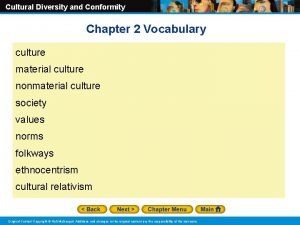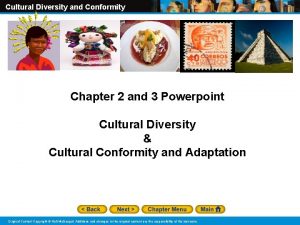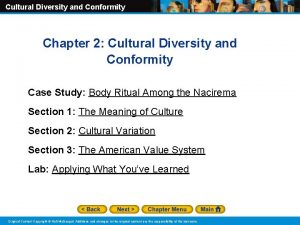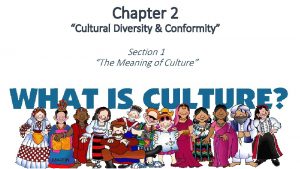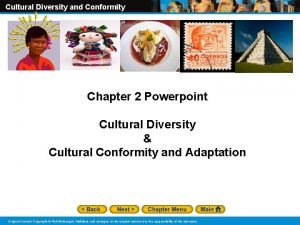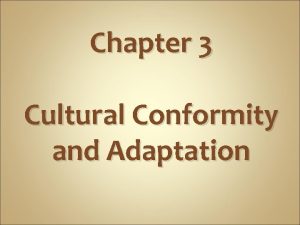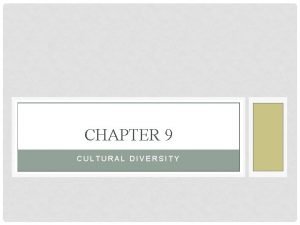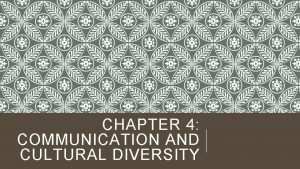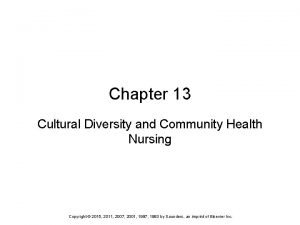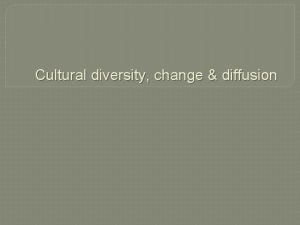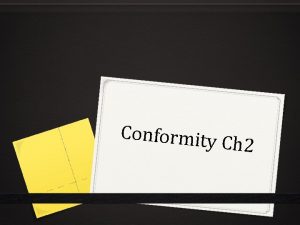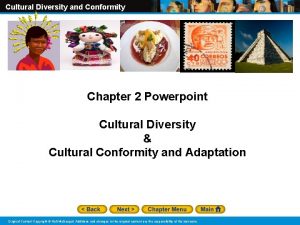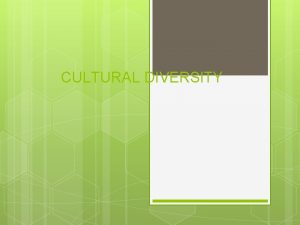Chapter 2 Cultural Diversity Conformity Section 1 The













- Slides: 13

Chapter 2 “Cultural Diversity & Conformity” Section 1 “The Meaning of Culture”


What Is Culture? • Culture consists of all the shared products of human groups, both physical and abstract. Physical products Abstract products • Material culture: physical objects created by humans • Nonmaterial culture: abstract human creations • Includes automobiles, books, building, clothing, computers, and cooking utensils • Beliefs, family patterns, ideas, language, political and economic systems, rules, skills, and work practices

Society & Culture… Are they the same?

Society • A group of interdependent people who have organized in such a way to share a common culture and feeling of unity.

Society People Culture Material Products Nonmaterial Products

The Components of Culture Technology Symbols Norms Language Values

(1) Technology § Refers to objects and the rules for using them § Any tool and its usage § Any rule that makes a use of an object illegal

(2) Symbols § The basis of human culture § Any words, gestures, or images § Different cultures use different symbols

Cross-cultural Communication An example of different meanings of the same gesture

(3) Language § Organization of written or spoken symbols into a standardized system § Can be used to express and communicate any idea

(4) Values § Values are shared beliefs § Distinguish between good and bad, right and wrong, desirable and undesirable § Group’s values help to determine character and culture

(5) Norms § Shared rules of conduct in specific situations ü Folkways do not carry heavy moral significance. They are norms for routine or casual interaction. (distinguish the difference between right and rude) ü Mores carry heavy moral significance (distinguish the difference between right and wrong) ü Laws are written and enforced by government
 Sociology chapter 2 cultural diversity and conformity
Sociology chapter 2 cultural diversity and conformity Cultural diversity and conformity section 1
Cultural diversity and conformity section 1 Cultural diversity and conformity
Cultural diversity and conformity Cultural diversity and conformity section 2
Cultural diversity and conformity section 2 Cultural diversity and conformity section 1
Cultural diversity and conformity section 1 Culture trait
Culture trait Cultural diversity and conformity chapter test form a
Cultural diversity and conformity chapter test form a Chapter 9 cultural competence
Chapter 9 cultural competence Chapter 4 communication and cultural diversity
Chapter 4 communication and cultural diversity Chapter 10 cultural diversity
Chapter 10 cultural diversity Chapter 13 cultural diversity and community health nursing
Chapter 13 cultural diversity and community health nursing Chapter 4 communication and cultural diversity
Chapter 4 communication and cultural diversity What is ecosystem biodiversity
What is ecosystem biodiversity Ecosystem jigsaw activity
Ecosystem jigsaw activity
